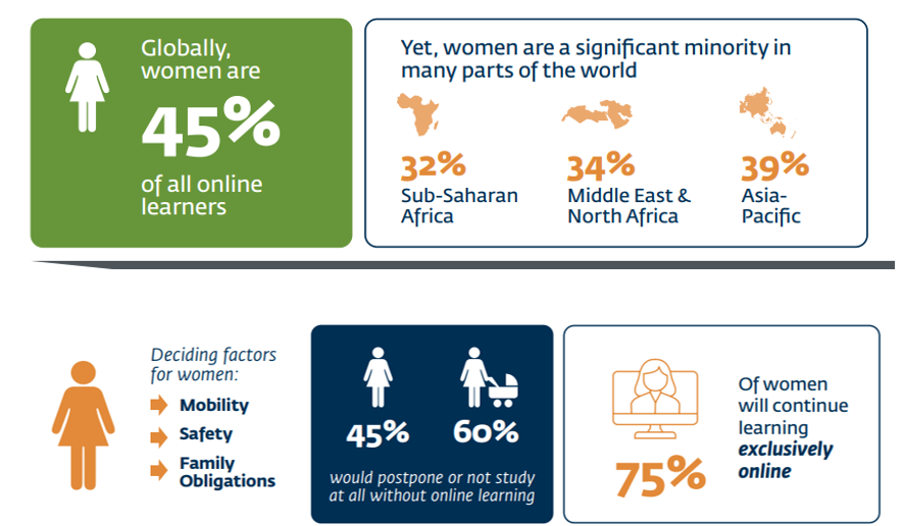How to help reduce gender gaps?
The categorical answer is education.
The world is committed to reducing gender inequality, in fact, this point is part of the 17 United Nations Goals for 2030.
These are some figures about Gender Inequality presented on the UN website:

Among the goals of the United Nations is a very clear one regarding technology and education: "Enhance the use of enabling technology, in particular information and communications technology, to promote the empowerment of women”.
Some figures:
1. It is estimated that it will take 132 years for women to achieve full parity with men in employment, according to the Global Gender Gap Report 2022.
2. The significance providing women with the education and skills they need to re-enter the workforce, is a crucial step in accelerating the fair and equitable recovery from the pandemic.
3. How equalizing the playing field for women through online learning will help them access better chances and possibilities.
The good news!
The good news is that online education is enhancing gender inclusion in science areas, erasing barriers for female students, and closing gender inequalities in education.
It is also educating women about in-demand occupations in the digital economy.
The participation of women learning online has increased significantly and is starting to match the participation of men in many countries, according to global data from Coursera in the Global Gender Gap Report 2022. In fact, the number of women learning online increased from 38% in 2019 to 45% in 2021, even as the gender employment gap widened.

Women and Online Learning in Emerging Markets, a new paper created by the IFC (World Bank Group) in association with Coursera and the European Commission, contains these intriguing and enlightening insights.
Further evidence from the study confirming the superiority of online learning includes the following:
According to IFC research, 45% of women and 60% of caregivers in poor nations indicated they would have had to delay or quit education if online learning was not an option.
Finance surfaced as a major obstacle for women in the study of female students, placing nearly half of them in the lower 50th percentile of income in their nation. This highlights the need for accessible learning in promoting fair outcomes.